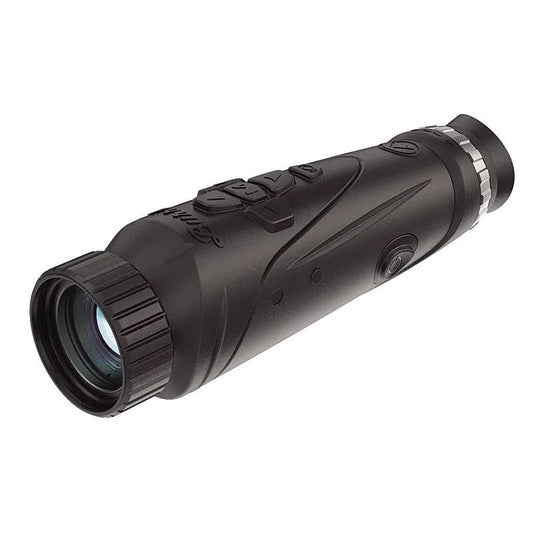

Burris BTH35 V2 Thermal Imaging Monocular is engineered for outdoor enthusiasts and tactical professionals who require reliable performance in low-light conditions. This thermal monocular provides impressive detection capabilities up to 750 yards, making it ideal for nighttime hunting or surveillance. The lightweight design enhances portability, ensuring comfort during extended use in the field.
Equipped with advanced features such as real-time Wi-Fi connectivity and smooth zoom functionality, this monocular allows for seamless target acquisition and recording directly from your smartphone. The high-resolution display, coupled with customizable color palettes, ensures clarity and detail, enhancing your viewing experience in various environments.
Key Features:
- HIGH RESOLUTION for clear imagery, enabling precise target identification.
- LONG RANGE CAPABILITIES allowing effective tracking of subjects up to 750 yards away.
- REAL-TIME WIFI CONNECTION lets you control and record footage directly from your mobile phone.
- SMOOTH ZOOM FUNCTIONALITY provides seamless transitions for better target acquisition.
- ADJUSTABLE CONTRAST allows customization based on environmental conditions for optimal viewing.
- MULTIPLE COLOR PALETTES enhance visibility and detail according to your preference and surrounding light.
- LIGHTWEIGHT DESIGN ensures easy portability for extended outdoor use.
- STADIAMETRIC RANGING simplifies distance assessment, making it easier to gauge your targets.
Technical Specifications Table
| Specification | Details |
|---|---|
| Magnification | Variable Zoom |
| Lens Diameter | 50mm |
| Weight | 1.2 lbs |
| Dimensions | 8.5 x 3.5 x 3 inches |
| Material | Durable plastic housing |
What’s in the Box?
- 1 × Burris BTH35 V2 Thermal Imaging Monocular
- Lens covers
- Padded case
- Neck strap
- User manual
Customer Reviews
"The Burris BTH35 V2 Thermal Imaging Monocular has transformed my hunting experience at night. Clarity and ease of use are top-notch. Highly recommend!" - Jason, avid hunter.
"I used this monocular during my tactical training, and it performed flawlessly. The real-time Wi-Fi feature is a game changer!" - Mark, tactical trainer.
FAQ
Q: How does the thermal imaging work in complete darkness?
A: The Burris BTH35 V2 Thermal Imaging Monocular detects heat emitted from objects, allowing you to see clearly even in total darkness. This feature is particularly useful for spotting wildlife or during search and rescue operations.
Q: Is it easy to connect to a mobile device?
A: Yes, the Wi-Fi connectivity is user-friendly. Simply download the Burris app, connect your monocular, and you can control settings and record footage directly from your smartphone.
Q: How does it compare to other thermal monoculars?
A: The Burris BTH35 V2 stands out due to its combination of high-resolution imaging, long-range capabilities, and user-friendly features, which many competitors lack. It's perfect for both novice users and seasoned experts.
Q: What is the battery life like?
A: The battery life is excellent, lasting several hours on a single charge, allowing for extended use in the field without interruption.
Q: Can I use it in humid conditions?
A: Absolutely! The Burris BTH35 V2 Thermal Imaging Monocular is designed to withstand various environmental conditions, including humidity, ensuring reliable performance.
Similar Models
Looking for the perfect alternative thermal optics? Discover our extensive Burris lineup, including models like Burris BT-2000 for versatile applications and Burris BT-3000 for enhanced features. Explore our full collection for exceptional optics tailored to your adventures.
You May Also Like
Here’s some of our most similar products people are buying. Click to discover trending style.






